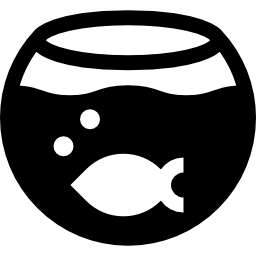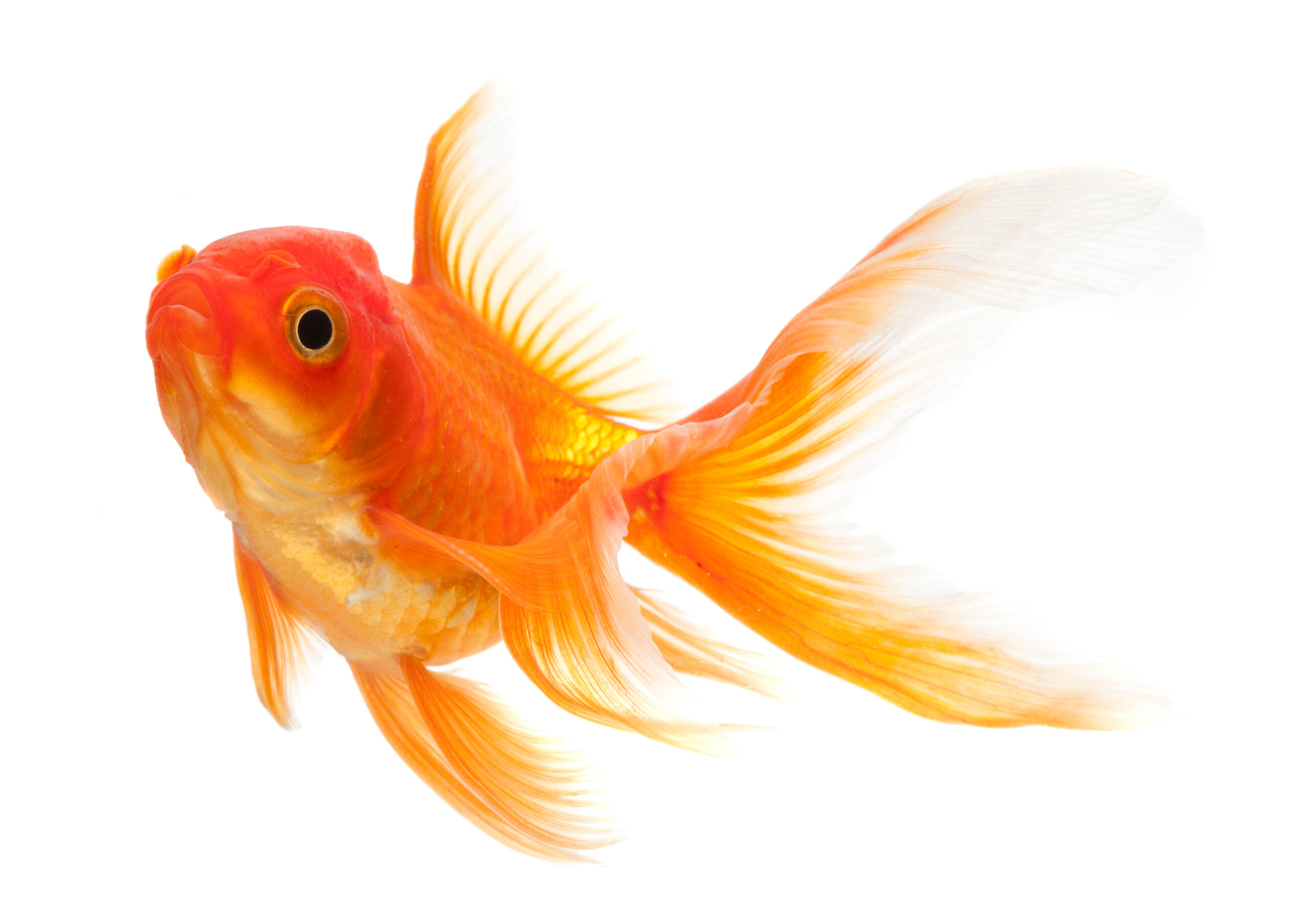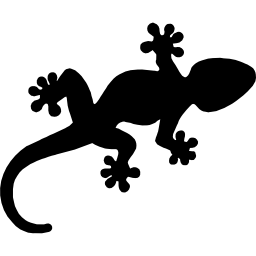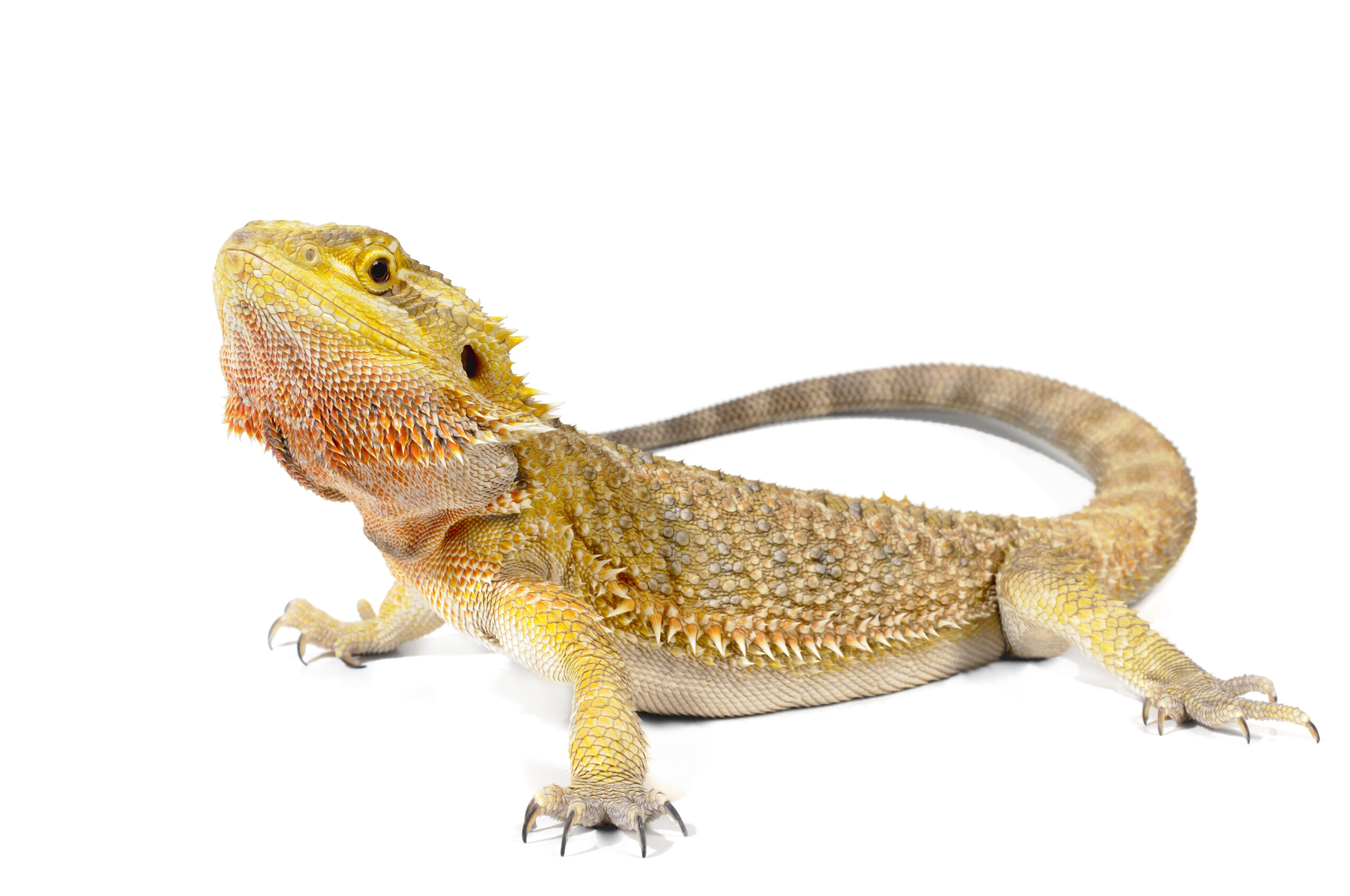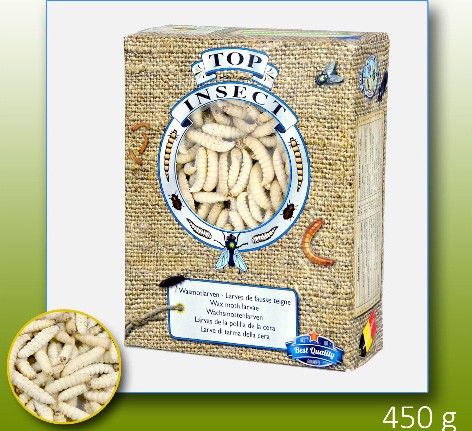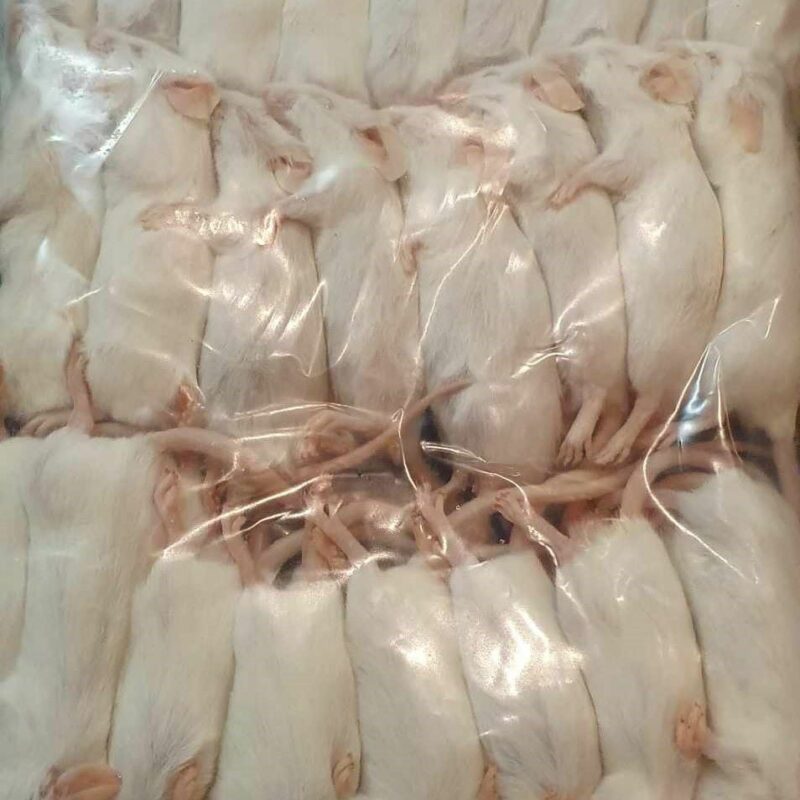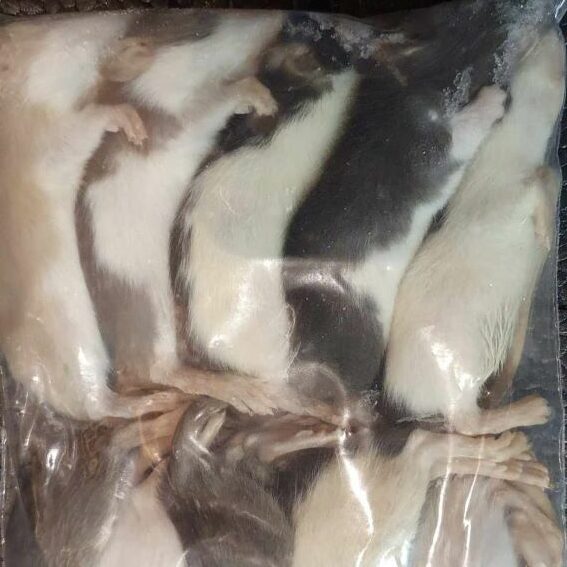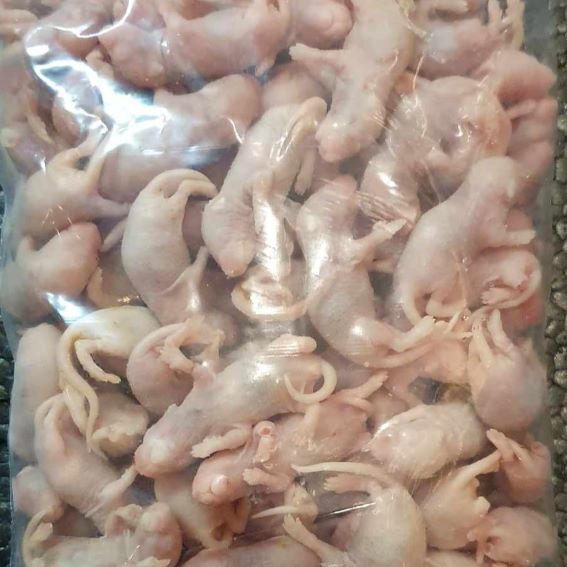Topinsect wax moth larvae are extremely nutritious due to their high percentage of dry material and fat. (See table) Their softness makes them an easily eaten and digestible insect.
In our farms, wax moth larvae are bred on a partly natural (among which bee honey) and a partly artificial medium without any added growth promoters or chemicals. The breed process of this insect is very labour-intensive which is obviously the reason why this insect is such an expensive food source.
Due to the boiling and shock freezing process on our equipment, the wax moth larvae are disposed of all bacteria and become virtually sterile. The remaining fraction of bacteria and fungus is well below the standards which apply to human and animal food. This is frequently verified through analysis. The double process makes the larvae also better digestible for animals.
Wax worms (Galleria mellonella ( Linnaeus) ) are a real menace for honeycombs and a lot of other materials due to their destructive nature.
The large wax moth goes through four life-stages: Egg, larva, pupa and moth
The lifecycle from egg to larva takes six to seven weeks at a temperature of 30 degrees and an average air humidity of 75 to 80 per cent. The larvae grow in seven phases of which they grow most during the last two. Full-grown larvae spin a cocoon and evolve to a pupa from which the moth will grow out.

